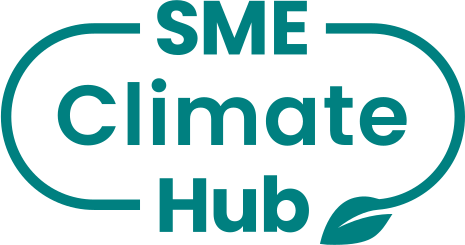See the steps your company can take towards a more sustainable future through our open resources.
Anetic Aid Ltd's Climate Report
Introduction *
Commitment And Targets *
Own emissions *
Value chain emissions *
(optional)Actions and plans to reduce emissions *
Climate Solutions *
(optional)Management and strategy *
(optional)Results, challenges and outlook *
Introduction *
reporting year
*30092023
number of employees in the reporting year
*65
Commitment And Targets *
net zero target year
*2050
Base year
*2022
comment on your net zero targets
*Scope 1 - can eliminate gas for heating using electric heat pump, but cannot replace diesel vans until a viable alternative (Hydrogen or better batteries) Scope 2 - use solar (250kw installation) & buy green electric Scope 3 - We use steel & plastic & it has to be transported on ships/hgvs. Technology needs to advance in these areas. Largely outside our control.
near-term scope 1 target
*35
target year
*2026
near-term scope 2 target
*90
target year
*2030
near-term scope 3 target
*10
target year
*2030
comment on your near-term targets
*Scope 1 - Insul offices. Replace gas heating with electric heat pumps. Company Cars are going, but 7 x company Diesel Vans will remain. Scope 2 - Consumption inc due to Heat Pumps. Consider Batteries for 130k kvh exported ex solar. Scope 3 - Steel & Plastic rms will be slow to change, as will comm transport & e/ee vehicles.
Own emissions *
scope 1 emissions
scope 1 emissions (metric tons co2e)
*93
own facilities
*28
metric tons CO2eown vehicles
*64
metric tons CO2eown processes
*1
metric tons CO2escope 2 emissions
scope 2 emissions (metric tons co2e)
*26
total energy consumption (kwh)
*160000
renewable energy
*100
purchased electricity
*26
metric tons CO2eRenewable electricity (%)
100
purchased steam
*N/A
Renewable electricity (%)
-
purchased heating
*N/A
Renewable electricity (%)
-
purchased cooling
*N/A
Renewable electricity (%)
-
Comment on your energy consumption
*We export 130,000kwh of solar electric to the grid & use 90,000kwh on site
Value chain emissions (optional) *
scope 3 emissions
scope 3 emissions (metric tons co2e)
*1555
supply chain related - upstream emissions
purchased goods and services
*1500
metric tons CO2ecapital goods
*33
metric tons CO2ewaste in operations
*4
metric tons CO2ebusiness travel
*10
metric tons CO2eemployee commuting
*6
metric tons CO2ecustomer related - downstream emissions
end-of-life treatment of products
*2
metric tons CO2eList any sources of emissions excluded:
*n/a
describe the calculation methodology and comment on accuracy:
*Mainly raw materials - know weights & numbers of Trolleys & PALS / TQs. Applied an average multiple of 3 to the weight to arrive at CO2 (mainly steel & plastics).
Actions and plans to reduce emissions *
Scope 1 Actions
own facilities
Yes
Have initially reduced gas consumption to heat the warehouse by designing a plastic skirt attached to the bottom of the largest roller shutter door which will help to retain heat in the winter. Planning to insulate & install heat pump to end the burning of gas for heating
own vehicles
No
7 x transit van for maintenance engineers - need technological breakthrough to provide a viable alternative to diesel
own processes
No
Not significant
scope 2 actions
purchased electricity
No
Already have a large solar installation - 250kw & a buy 100% renewable
purchased steam
N/A
-
purchased heating
N/A
-
purchased cooling
N/A
-
scope 3 actions
supply chain related (upstream)
purchased good and services
*No
We have to use steel & plastic to make our products. Only technological breakthroughs can assist. It has to be transported.
capital goods
*No
Not significant
fuel and energy related activities
*N/A
-
transportation and distribution (upstream)
*N/A
-
waste in operation
*No
Not significant
business travel
*No
Not significant
employee commuting
*No
We have a bike to work scheme & most employees are very local. Others car share. Not significant
upstream leased assets
*N/A
-
customer related (downstream)
transportation and distribution (downstream)
*N/A
-
processing of sold products
*N/A
-
use of sold products
*N/A
-
end-of-life treatment of products
*N/A
-
leased assets (downstream)
*N/A
-
franchises
*N/A
-
investments
*N/A
-
i have asked my suppliers to halve emissions before 2030 and join the un-backed race to zero campaign
*No
i have communicated my commitment and actions to my business customers and asked them to join the un race to zero
*No
Climate Solutions (optional) *
Provide descriptions/names of your climate solutions:
*-
Methodology used to assess these as climate solutions:
*-
are you investing in climate and/or nature outside your value chain?
*Yes
provide details of the project/s you invest in:
*Owner has his own arboretum & assisting in a community wood. Money given to the scouts
how are they quality secured?
*-
which value do they represent (in usd)?
*-
Management and strategy (optional) *
Results, challenges and outlook *

Anetic Aid Ltd's Climate Report
Anetic Aid Ltd's Climate Report - 30092023
Introduction *
reporting year
*30092023
number of employees in the reporting year
*65
Commitment And Targets *
net zero target year
*2050
Base year
*2022
comment on your net zero targets
*Scope 1 - can eliminate gas for heating using electric heat pump, but cannot replace diesel vans until a viable alternative (Hydrogen or better batteries) Scope 2 - use solar (250kw installation) & buy green electric Scope 3 - We use steel & plastic & it has to be transported on ships/hgvs. Technology needs to advance in these areas. Largely outside our control.
near-term scope 1 target
*35
target year
*2026
near-term scope 2 target
*90
target year
*2030
near-term scope 3 target
*10
target year
*2030
comment on your near-term targets
*Scope 1 - Insul offices. Replace gas heating with electric heat pumps. Company Cars are going, but 7 x company Diesel Vans will remain. Scope 2 - Consumption inc due to Heat Pumps. Consider Batteries for 130k kvh exported ex solar. Scope 3 - Steel & Plastic rms will be slow to change, as will comm transport & e/ee vehicles.
Own emissions *
scope 1 emissions
scope 1 emissions (metric tons co2e)
*93
own facilities
*28
metric tons CO2eown vehicles
*64
metric tons CO2eown processes
*1
metric tons CO2escope 2 emissions
scope 2 emissions (metric tons co2e)
*26
total energy consumption (kwh)
*160000
renewable energy
*100
purchased electricity
*26
metric tons CO2eRenewable electricity (%)
100
purchased steam
*N/A
Renewable electricity (%)
-
purchased heating
*N/A
Renewable electricity (%)
-
purchased cooling
*N/A
Renewable electricity (%)
-
Comment on your energy consumption
*We export 130,000kwh of solar electric to the grid & use 90,000kwh on site
Value chain emissions (optional) *
scope 3 emissions
scope 3 emissions (metric tons co2e)
*1555
supply chain related - upstream emissions
purchased goods and services
*1500
metric tons CO2ecapital goods
*33
metric tons CO2ewaste in operations
*4
metric tons CO2ebusiness travel
*10
metric tons CO2eemployee commuting
*6
metric tons CO2ecustomer related - downstream emissions
end-of-life treatment of products
*2
metric tons CO2eList any sources of emissions excluded:
*n/a
describe the calculation methodology and comment on accuracy:
*Mainly raw materials - know weights & numbers of Trolleys & PALS / TQs. Applied an average multiple of 3 to the weight to arrive at CO2 (mainly steel & plastics).
Actions and plans to reduce emissions *
Scope 1 Actions
own facilities
Yes
Have initially reduced gas consumption to heat the warehouse by designing a plastic skirt attached to the bottom of the largest roller shutter door which will help to retain heat in the winter. Planning to insulate & install heat pump to end the burning of gas for heating
own vehicles
No
7 x transit van for maintenance engineers - need technological breakthrough to provide a viable alternative to diesel
own processes
No
Not significant
scope 2 actions
purchased electricity
No
Already have a large solar installation - 250kw & a buy 100% renewable
purchased steam
N/A
-
purchased heating
N/A
-
purchased cooling
N/A
-
scope 3 actions
supply chain related (upstream)
purchased good and services
*No
We have to use steel & plastic to make our products. Only technological breakthroughs can assist. It has to be transported.
capital goods
*No
Not significant
fuel and energy related activities
*N/A
-
transportation and distribution (upstream)
*N/A
-
waste in operation
*No
Not significant
business travel
*No
Not significant
employee commuting
*No
We have a bike to work scheme & most employees are very local. Others car share. Not significant
upstream leased assets
*N/A
-
customer related (downstream)
transportation and distribution (downstream)
*N/A
-
processing of sold products
*N/A
-
use of sold products
*N/A
-
end-of-life treatment of products
*N/A
-
leased assets (downstream)
*N/A
-
franchises
*N/A
-
investments
*N/A
-
i have asked my suppliers to halve emissions before 2030 and join the un-backed race to zero campaign
*No
i have communicated my commitment and actions to my business customers and asked them to join the un race to zero
*No
Climate Solutions (optional) *
Provide descriptions/names of your climate solutions:
*-
Methodology used to assess these as climate solutions:
*-
are you investing in climate and/or nature outside your value chain?
*Yes
provide details of the project/s you invest in:
*Owner has his own arboretum & assisting in a community wood. Money given to the scouts
how are they quality secured?
*-
which value do they represent (in usd)?
*-
Management and strategy (optional) *
Results, challenges and outlook *
Not sure how to start?
See the steps you can take and get help building a plan to cut your business emissions today.
¿No estás seguro de por dónde empezar?
Revisa los pasos que puedes dar y obtén ayuda para elaborar un plan para reducir las emisiones de tu empresa hoy mismo.
لست متأكداً كيف تبدأ؟
اطلع على الخطوات التي يمكنك اتخاذها واحصل على المساعدة في وضع خطة لخفض انبعاثات شركتك اليوم.
Vous ne savez pas par où commencer ?
Découvrez les mesures que vous pouvez prendre et obtenez de l’aide pour élaborer un plan pour réduire les émissions de votre entreprise dès aujourd’hui.
Osäker på hur du ska börja?
Se vilka steg du kan ta och få hjälp med att utforma en plan för att minska dina företagsutsläpp idag.
Não sabe por onde começar?
Veja as medidas que você pode tomar e obtenha ajuda para elaborar um plano para reduzir as emissões da sua empresa hoje mesmo.
Ready to commit to lower emissions?
It’s easy to make the commitment. Just complete a form sharing your intent to reduce your emissions.
You’ll earn public recognition for taking the first step.
¿Listo para comprometerte a reducir tus emisiones?
Es fácil comprometerse. Solo tienes que completar un formulario compartiendo tu intención de reducir tus emisiones.
Ganarás reconocimiento público por tomar este primer paso.
هل أنت مستعد للالتزام بتقليل الانبعاثات؟
الالتزام سهل. ما عليك سوى تعبئة نموذج لمشاركة عزمك على تقليل انبعاثاتك.
سوف تحظى باعتراف عام باتخاذك الخطوة الأولى.
Prêt à vous engager pour réduire les émissions ?
S’engager est simple. Il suffit de remplir un formulaire indiquant votre intention de réduire vos émissions.
Vous gagnerez une reconnaissance publique pour avoir fait le premier pas.
Redo att åta sig att minska utsläppen?
Det är enkelt att göra åtagandet. Fyll bara i ett formulär där du delar med dig av din avsikt att minska dina utsläpp.
Du kommer att få offentligt erkännande för att du tagit det första steget.
Pronto para se comprometer com a redução das emissões?
É fácil assumir esse compromisso. Basta preencher um formulário informando sua intenção de reduzir suas emissões.
Você receberá reconhecimento público por dar o primeiro passo.
Register now to use our tools
Register now to use our tools

Stay updated!
Sign up for our newsletter to stay updated with the latest climate developments.
Log in to your account
Welcome back! Please enter your details.
Log in
Don't have an account? Create account to access our tools or make the SME Climate Commitment
Log in
Don't have an account? Create account to access our tools or make the SME Climate Commitment
Forgot password?
Please enter your email address. You will receive a link to create a new password via email.

 Go back
Go back

